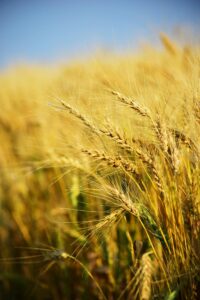Introduction
The small and micro milling category is defined as milling which has a capacity of up to 5 tons per hour (micro) and 1 ton per hour (small).
There are growth opportunities within the milling industry, both locally and in relation to exports to neighbouring SADC countries. Due to relatively low start up and running costs, along with high returns and a market opening for niche milled products, small and micro milling is a viable and sustainable investment for any group of investors.
Micro milling is highly suited to farmers because they already have industry specific advantages of product, storage and labour. Similarly, people in rural environments where finished product often incurs large price additions due to transport and trader mark ups could offer a superior product at a lower cost whilst still retaining large margins.
Local business environment
There are some 180 small mills operating in the country. Products are usually cheaper than what is on the market since the mills are closer to places where the crops are actually grown, thus reducing logistics costs.
The following opportunities exist for local small and micro milling business:
GRAIN MILLING
- Localised Milling: Local production facilities throughout SADC
- Breweries and Snack Food industries: Specialised maize grits production and/or other maize products
- Baking Industry: Specialised biscuit wheat flours and biscuit/rusk production lines
- Specialised Continental Bakery and Pizza Market: Value-added “00” cake flour production for this burgeoning sector
- Infant Food and Breakfast Cereal Producers: Rice flour milling
- Beverage and Cereal Products: Barley flour milling
- Specialised Baking Market: Rye flour milling
- Specialised ‘Al-Dente’ Pasta Manufacture: Durum Wheat/Semolina for production of authentic, top-quality Italian-style pastas
- Organic Market: Wheat and maize flour milling
BASIC FOODS
- Bread: Micro-bakeries
- Instant bread: Premixes
- Famine relief and feeding programmes: Vitamin enriched basic foods
- Prisons & mine workers: Extended shelf-life, non-refrigerated instant nutrition
The expected outcomes are the provision of local markets; competitive prices; job creation; poverty alleviation and enterprise development.
Source: Jane Higgins
For the newcomer
Micro milling has been identified as an ideal BEE venture. In particular, it should be of particular interest to a large processor who seeks to earn BEE points for Enterprise Development.
Small milling can provide multiple benefits from end to end as the industry encourages new skills development and lends itself towards empowering communities to become self sufficient. Relatively low start up costs with high returns facilitates a swift, upward incorporation into the economy.
The wider range of training options and backup available to the small/micro milling industry provides entrants with further investment security. Other factors such as minimal infrastructure requirements, low running costs, transport savings amidst increasing fuel prices and the ability to easily diversify product range make the small milling industry a profitable, viable and sustainable business option.
One 3 ton/hour milling plant has the potential to provide a rural community with 330 tons/month of animal feed and 1300 tons per month of quality maize meal – enough to feed 150,000 people! The same project can potentially generate 25-30 direct employment opportunities and up to 150 indirectly. Food costs in the vicinity of the small milling project can be reduced by up to 25%.
National strategy and government contact
Small and micro milling has fitted into the then Department of Trade & Industry’s Industrial Policy Action Plan (IPAP) Small-Scale Maize Milling Initiative, and also qualified under the New Business Manufacturing Scheme, a grant payable over two years post start-up and based on 20% to 25% of the total capital cost of the project. Find the dtic incentives here.
Read about the required fortification mixes for wheat flour and maize meal at https://foodfacts.org.za/food-fortification/.
Role players
View the Premium Listings below (scroll down or click on “Premium Listings” on the Table of Contents to the right).
Further reference:
Associations
- The National Chamber of Milling (NCM) is an option that is open to all millers, including small and micro sectors. The NCM has a representative who looks after small/micro millers’ interests.
Training and research
- Some of the companies involved (see above) offer concise introductory courses to basic milling practices. Visit their websites.
- Small milling has featured as a priority in AgriSETA planning.
- View the AgriSETA-accredited National Certificate: Grain Milling at www.agriseta.co.za. Another Sector Education and Training Authority (SETA) relevant to this page is FoodBev. Their relevant chamber would be the Baking, Cereals, Confectionary and Snacks Chamber one.
Websites and publications
Visit the websites listed earlier on this page.
- Find the publication Small-Scale Milling: A guide for development workers by Lars-Ove Jonsson at https://practicalactionpublishing.com/book/1987/small-scale-milling
- Staff Reporter. 2025, April 4. “Smart milling is transforming the food industry”. Food for Mzansi. Available at www.foodformzansi.co.za/smart-milling-is-transforming-the-food-industry
- Kriel, G. 2018, December 5. “Small stone mill adds value to Western Cape wheat”. Farmer’s Weekly. Available at www.farmersweekly.co.za/agri-business/agribusinesses/small-stone-mill-adds-value-western-cape-wheat/
- Phillips, L. 2018, August 18. “Zambia: independent maize miller a lifeline for smallholders”. Farmer’s Weekly. Available at www.farmersweekly.co.za/agri-business/zambia-independent-maize-miller-lifeline-smallholders/
- Find articles like “New technology gives milling industry a boost” and “Maize micro mills stake their claim” on the internet.
Sources for the page: previous notes written for this project by Jane Higgins; Farmer’s Weekly article “Maize micro mills stake their claim”






